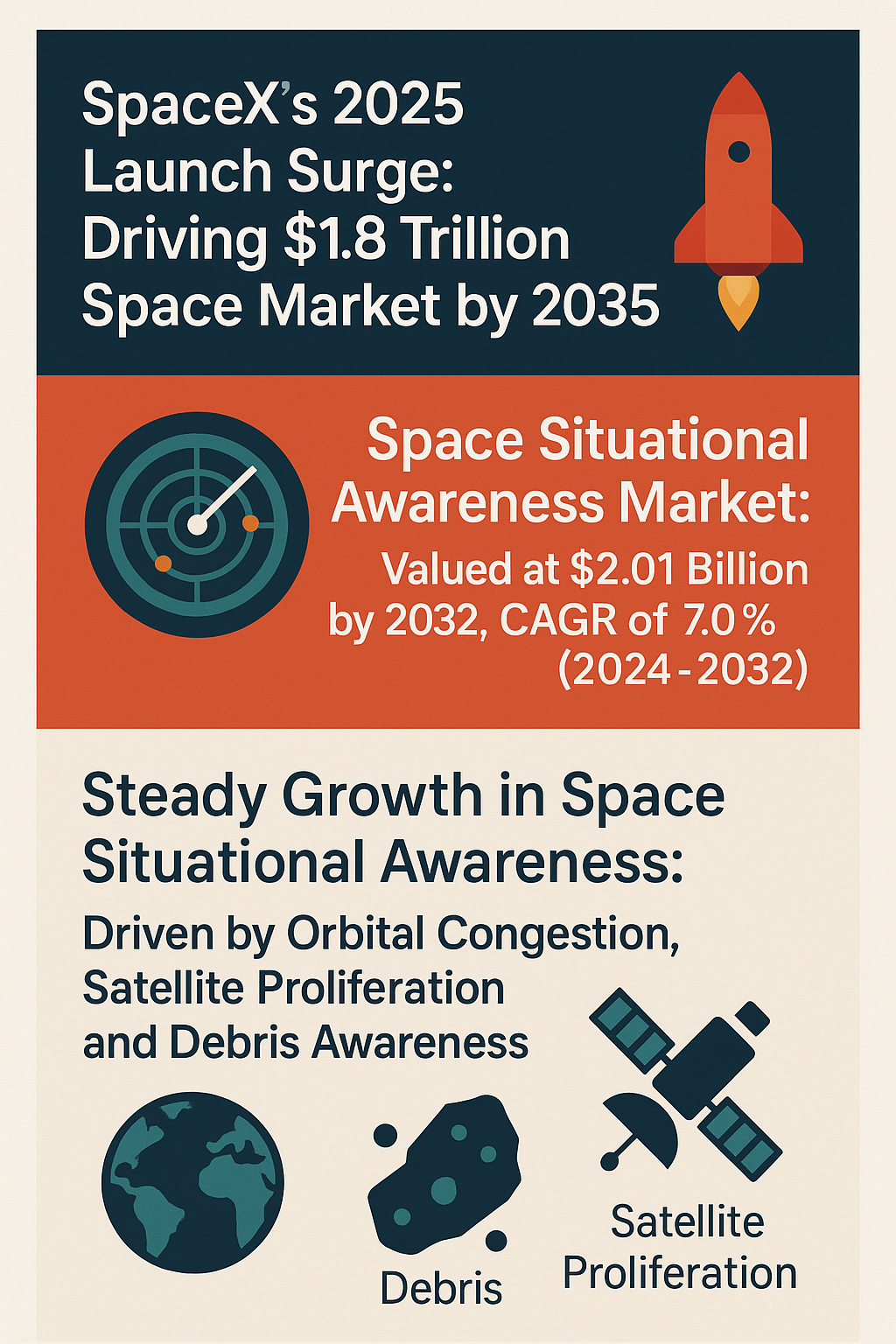Global Scans · Space · Intelligence Briefing
Intelligence Briefing about Space
Critical Trends Impacting the Organization
- Cybersecurity Threats in Space Systems: Increasingly sophisticated cyber attacks impacting satellite supply chains and communications infrastructure (https://unisa.edu.au/media-centre/Releases/2025/new-gamified-tool-helps-defend-satellite-supply-chains-from-cyber-threats/).
- Expansion of AI and Cloud Computing in Orbit: Deployment of AI chips and cloud platforms aboard satellites promises transformative computational capabilities in space (https://reason.com/2025/12/11/google-spacex-and-blue-origin-plan-to-put-ai-in-space-will-it-produce-skynet-or-untold-economic-abundance/; https://www.scientificamerican.com/article/data-centers-in-space/).
- Rapid Growth of Satellite Constellations for Communications: Operatives like AST SpaceMobile scaling LEO constellations to provide ubiquitous broadband connectivity (https://www.investing.com/analysis/ast-spacemobile-nears-a-defining-moment-as-bluebird-6-tests-its-scaling-story-200671754).
- Militarization and Space Warfare: Emerging threats from state actors advancing space combat capabilities, potentially outpacing U.S. development (https://www.washingtontimes.com/news/2025/dec/8/us-ready-era-space-warfare/; https://www.washingtontimes.com/news/2025/dec/12/army-moving-ahead-tests-could-reshape-future-military-comms/).
- International Competition and National Ambitions: Nation-states such as India and China accelerating efforts in space station construction, lunar exploration, and economic space ventures (https://www.outlookbusiness.com/economy-and-policy/india-prepares-for-45-billion-space-economy-driven-by-private-firms-reports-say).
- Space Sustainability Initiatives: Efforts like ESA’s Zero Debris Charter focused on reducing orbital debris to protect space environment (https://www.belfercenter.org/research-analysis/space-cop-governance).
Key Challenges, Opportunities, and Potential Risks
- Challenges: Protecting satellite infrastructures from multi-stage cyber intrusions; ensuring resilience against physical and cyber attacks; managing geopolitical space rivalries; mitigating orbital congestion and debris risks.
- Opportunities: Harnessing AI-enabled satellites for defense, commercial, and research applications; expanding global communications via LEO constellations; leveraging space-based cloud computing for new services.
- Risks: Escalation of space warfare compromising critical military assets; supply chain vulnerabilities causing systemic disruption; international regulatory gaps impeding sustainability and security.
Scenario Development: Four Plausible Futures
- Best-Case Scenario – Cooperative Space Innovation: Global partners align on robust cybersecurity frameworks and debris mitigation; AI-enabled satellites deployed widely; space commerce and defense capabilities grow sustainably, enhancing global stability.
- Technology-Driven Expansion with Emerging Risks: Rapid commercial and military AI/Cloud satellite deployment accelerates connectivity and capabilities; however, cybersecurity and debris challenges increase, creating vulnerabilities and regional tensions.
- Fragmented Space Domain with Heightened Competition: Major powers pursue aggressive space militarization; cyberattacks escalate; space debris grows unchecked; commercial ventures face operational risks; global governance remains limited, raising conflict potential.
- Worst-Case Scenario – Space Conflict and Systemic Disruption: Cyber-physical attacks severely disrupt satellite networks; space warfare erupts among leading powers; debris contamination limits usable orbits; commercial and military satellite operations suffer widespread failure.
Strategic Questions for Policy Advisors and Strategists
- How can international partnerships be strengthened to develop unified cybersecurity and debris management standards in space?
- What mechanisms could enable resilience and rapid recovery of satellite infrastructure against multi-vector cyber and physical attacks?
- In what ways might the integration of AI and cloud computing in orbit redefine strategic advantages and vulnerabilities?
- How should the organization balance commercial growth opportunities with emerging military threats in the space domain?
- What contingency plans could be devised to mitigate risks arising from increased orbital congestion and debris accumulation?
Potential Actionable Insights for Strategic Decision-Making
- Investing in simulation and gamified cyber defense tools could improve preparedness against advanced satellite supply chain attacks.
- Exploring partnerships with AI and cloud platform providers might unlock tactical and commercial advantages in space-based operations.
- Proactively engaging in multilateral frameworks on space debris and cybersecurity may reduce regulatory uncertainty and foster stability.
- Monitoring emerging space warfare technologies and doctrines could enable anticipatory policy development to address new threats.
- Considering diversification of satellite communication assets and redundant architectures could enhance operational resilience.
Briefing Created: 15/12/2025
